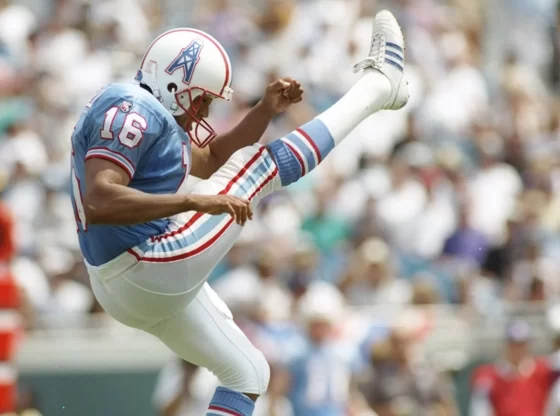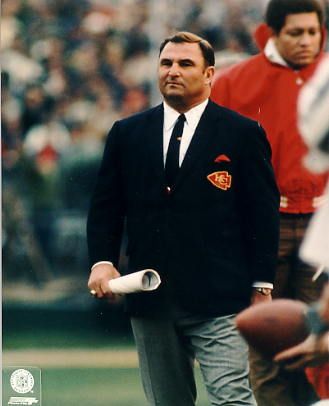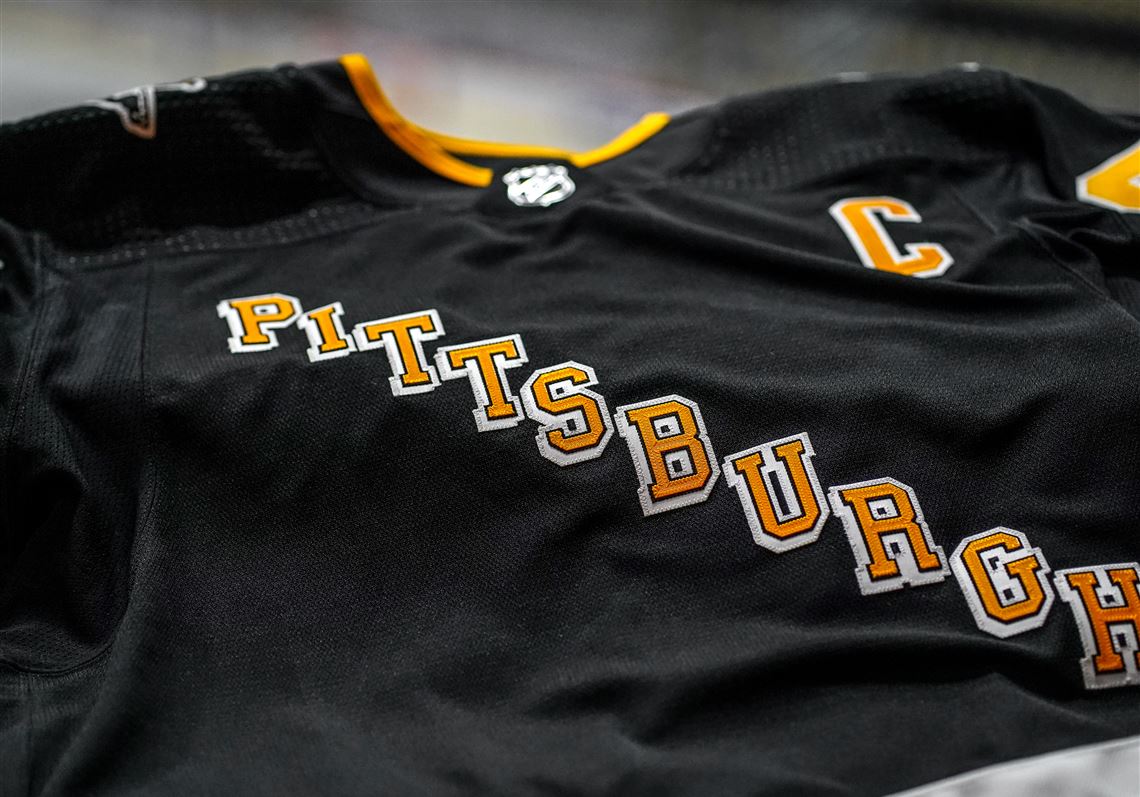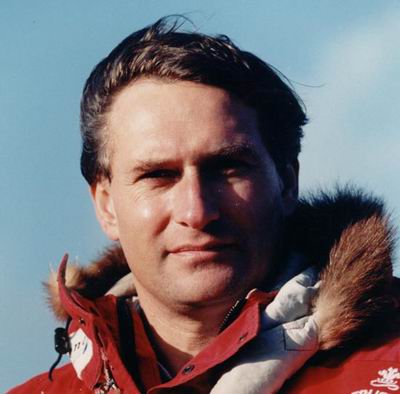One of the eight charter franchises of the American Football League, the Oilers played in Houston from 1960 to 1996. After winning the AFL title in each of their first two years of existence, the Oilers never won a championship again, although in the late 1970s they battled the Pittsburgh Steelers for NFL supremacy in a pair of title games dubbed World War III.
Like Lamar Hunt, Kenneth Staley “Bud” Adams was a wealthy Texas oilman who wanted to own a pro football team. Like Hunt, he was denied an NFL expansion team. When the two men got together in 1959 and tried to buy the struggling Chicago Cardinals and move them to Texas, they were denied, so they formed their own league. Adams was instrumental in establishing the success of the AFL. He, Hunt and Buffalo Bills owner Ralph Wilson were the three most financially-stable owners of the original eight. The trio would go on to own their franchises for over 40 years. One of Adams’ most significant contributions was helping keep the New York Titans –who would become the league’s marquis team playing in the nation’s largest market — in business until they could be sold to Sonny Werblin, move to Shea Stadium, and become the Jets.
The Oilers outbid the NFL’s Los Angeles Rams for 1959 Heisman Trophy winner Billy Cannon, then coaxed quarterback/placekicker George Blanda out of retirement from the Chicago Bears. Competing in the AFL East with Buffalo, New York and the Boston Patriots, Houston beat the Chargers for the AFL title in both 1960 and 1961. In their third season, the Oilers again reached the AFL Championship Game, where they lost to the Dallas Texans [later Kansas City Chiefs], 20-17, in double overtime. It was the only overtime game in the ten-year history of the AFL. The Oilers reached the playoffs twice more in the decade, losing both times to the Oakland Raiders. The Silver and Black beat Houston in the 1967 AFL Championship Game as well as in the 1969 Divisional playoffs. The AFL and NFL merged for the 1970 season.
The years immediately after the merger were unkind to the Oilers. Houston was hapless, sinking to the bottom of the AFC Central while becoming the laughingstock of the league. The Oilers lost 31 of 34 games during one stretch between 1972 and 1974 and had averaged barely three wins per year since the merger. In 1975, “Bum” Phillips was hired as the fifth Oilers coach in six years. The NFL’s down-home philosopher, Phillips was dumb like a fox. Wearing a ten gallon hat, cowboy boots and blue jeans, he spoke and dressed more like a rancher than football coach. Phillips, who also served as GM, retooled the Oilers into contenders, going 10-4 in his first season.
The Oilers struck it rich in 1978, landing Heisman Trophy winner Earl Campbell with the first overall pick of the NFL Draft. Making what Phillips called a “commitment to excellence,” Houston traded tight end Jimmy Giles and a first, second, third and fifth-round draft pick to get Campbell. The “Tyler Rose” did not disappoint. Campbell had one of the finest seasons in pro football history, rushing for a league-leading and rookie record 1,450 yards to earn Rookie of the Year and league MVP honors. It was the beginning of the “Luv Ya Blue” era in Houston, as the city rallied behind their beloved “Earlers,” filling the Astrodome while sporting face paint, blue pompoms, and carrying signs. Led by quarterback Dan Pastorini, a stingy defense, and Campbell – the most punishing running back in the league and greatest player in franchise history – the football team, like the local economy, was booming.
Houston reached the AFC Championship Game two straight years, but could not get past the Pittsburgh Steelers, winners of four Super Bowls in six seasons between 1974 and 1979. Houston advanced to the AFC Championship Game two years in a row but were turned back both times by the vaunted Steelers, their division rivals in the AFC Central. Following their second loss, in the 1979 title game, Phillips told Oilers fans, “Last year we knocked on the door. This year we beat on it. Next year we’re going to kick the SOB in.” It was not to be, as Phillips was fired following a first-round playoff exit in 1980. The team fell into disarray and Houston fans blamed Adams [a notorious micro-manager, the owner insisted on personally approving all expenditures over $ 200]. The winningest coach in franchise history at 59-38, Phillips later quipped, “When I die, I want y’all to put a postscript on my tombstone: He’d have lived a lot longer if he hadn’t had to play the Steelers six times in two years.”
The Oilers played their first four seasons at the University of Houston’s Jeppesen Stadium before moving to Rice Stadium, their home from 1965 to 1967. In 1968, they moved into the Astrodome, The Eighth Wonder of the World. Home of the MLB Astros, the facility was the world’s first multipurpose domed sports stadium and was the first to feature artificial turf, called “AstroTurf.” Adams never liked the Astrodome. The Oilers played second fiddle to the Astros and their 81 home dates. Featuring poor sight lines, the venue’s 50 yard-line seats were farthest from the field of play. The Astrodome seated only 50,000. By the early 1980s, it had the lowest seating capacity in the NFL.
Unhappy with the Astrodome, Adams threatened to move the Oilers to Jacksonville in 1987. The city of Houston responded with a commitment to install new turf, 10,000 additional seats and 65 luxury boxes. Adams promised to stay another ten years. By the mid-1990s, several NFL teams had new stadiums. Adams lobbied Houston mayor Bob Lanier for a new one but was immediately rejected, as he knew the people of Houston would not support funding for a new stadium. Adams then shopped his team to other cities. He met with Nashville city leaders, struck a deal, and arranged to bring the Oilers to the Music City for the 1998 season, where they would move into the new 68,000-seat Adelphia Coliseum [now Nissan Stadium].
The move was announced shortly after the end of the 1995 season. Some in Houston attempted to block the move, but by the start of the 1996 season, support for the Oilers had practically vanished. Fewer than 20,000 fans attended home games, which looked even smaller due to the spacious configuration of the woeful Astrodome. A lame duck franchise, the team’s radio network disbanded and local broadcasts were replaced with the NBA Rockets. Support dwindled so quickly and so completely that the Oilers were released from their lease and allowed to move to Tennessee a year early. On December 16, 1996, the Oilers lost to the Cincinnati Bengals, 21-13, before 15,131 uninterested fans in the Astrodome. It was the last game the Oilers ever played in Houston. Fifteen years later, the city’s taxpayers were still footing the bill for upgrades to the Astrodome.
Throughout their nearly four decades in Houston, the Oilers logo remained a simple oil derrick. The team colors of Columbia Blue, scarlet and white did not change, but their uniforms did. From 1960 to 1965, the Oilers wore a Columbia Blue helmet with white oil derrick logo. Between 1966 and 1971, the hat was silver and oil derrick Columbia Blue. During the lean years from 1972 to 1974, the Oilers helmet was Columbia Blue with white and scarlet derrick. From 1975 until their move to Nashville, the Oilers sported a white hat with Columbia Blue derrick. In 1998, the franchise changed their name from Oilers to Titans, and the NFL officially retired the Oilers name.
The Oilers were 256-291 during their 37 years in Houston. They had 16 head coaches, including Wally Lemm, who left after winning the 1961 AFL Championship before returning in 1966 to lead the Oilers for five more seasons. Houston made 14 postseason appearances, playing in four AFL championships and two AFC Conference title games. Houston made the playoffs seven straight years from 1987 to 1993, winning two Central Division crowns. Franchise stalwarts George Blanda and Earl Campbell won league MVP awards, while Campbell and running back Eddie George were both Rookies of the Year. Seven Oilers have been enshrined into the Pro Football Hall of Fame, including Blanda, Campbell, Ken Houston, Mike Munchak, Elvin Bethea, Warren Moon and Bruce Matthews.
In 1999, Robert McNair was awarded, at a cost of one billion dollars, an expansion team for Houston. The Texans moved into brand new NRG Stadium for their inaugural season in 2002.
On this date in 1960, Bud Adams was preparing for the Houston Oilers’ first season as a professional football franchise.









